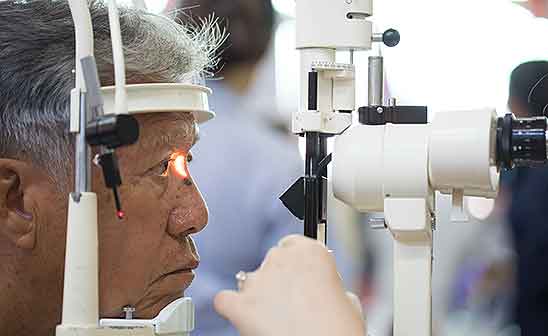A genetic analysis of nearly 65,000 Kaiser Permanente Northern California patients uncovered nine specific positions across the human genome, called genetic loci, that are associated with variations in the risk of the most common form of glaucoma. The findings were published on June 11 in Nature Communications.

“Glaucoma is a leading cause of blindness worldwide,” said lead author Hélène Choquet, PhD, staff scientist at the Kaiser Permanente Division of Research. “By identifying new genetic loci associated with glaucoma risk, our study provides important insights into the pathogenesis of this progressive condition.”
The research team analyzed the DNA of 4,986 Kaiser Permanente Northern California (KPNC) patients with primary open-angle glaucoma, which is the most common form of glaucoma, and 58,426 without. According to self-reported race/ethnicity information, the participants included non-Hispanic white, Hispanic/Latino, East Asian, and African-American patients, making this the largest and most diverse genomic study of primary open-angle glaucoma to date.
The analysis pinpointed 24 regions, or loci, across the genome that were strongly associated with risk of glaucoma, 14 of which had not previously been linked to the disease. Further analysis of data from 176,890 individuals from a separate U.K. study confirmed the statistical strength of nine of the newly identified loci.
Evaluation of the Kaiser Permanente patients’ medical records suggested that some of the new loci influence glaucoma risk through their effects on pressure inside the eye, or intraocular pressure, a well-known glaucoma risk factor. (A 2017 study from the same research group uncovered a record number of loci associated with variations in intraocular pressure, which could help clarify how elevated eye pressure leads to glaucoma.) Cell-line and mouse experiments provided further evidence that genes within two of the loci act via intraocular pressure, with some mutations causing a condition in mice that resembles primary open-angle glaucoma.
“Genes within these identified loci may be important targets for the treatment of glaucoma,” said study co-author and KPNC ophthalmologist Ronald Melles, MD. “These loci could also potentially serve as genetic predictors of glaucoma risk.”
Another important finding from this study is that the prevalence of primary open-angle glaucoma within race/ethnicity groups differed according to genetic ancestry: A higher risk of primary open-angle glaucoma was associated with greater northern (versus southern) East Asian ancestry in the East Asian group, greater Native American (versus European) ancestry in the Hispanic/Latino group, and greater African (versus European) ancestry in the African-American group.
This within-group variation could be due to genetic risk factors or non-genetic risk factors that correlate with genetic ancestry, such as culture and diet. The newly identified loci account for a small proportion of the observed within-group variation.

“African-Americans have a much higher risk of primary open-angle glaucoma, and previously identified genetic risk variants for the disease explained very little of this elevated risk,” said senior study author Eric Jorgenson, PhD, Research Scientist at the Kaiser Permanente Division of Research. “Our newly identified loci now explain a small, but important, amount of the risk in African-Americans, probably thanks to our large sample size.”
Much of the genetic risk for primary open-angle glaucoma remains unaccounted for, with less than 4 percent of the genetic variance in each group explained. Nonetheless, these findings could inform efforts to identify genetic predictors of risk for glaucoma in each race/ethnicity group.
All patients in the study were participants of the Research Program on Genes, Environment and Health (RPGEH), a research program that investigates genetic and environmental effects on common diseases. The RPGEH includes over 200,000 adult members of KPNC who volunteered to provide saliva or blood samples for genetic analysis and permit researchers to link de-identified data from their electronic health records with genetic data from their samples for research on health conditions. The study was conducted in the Genetic Epidemiology Research in Adult Health and Aging (GERA) Cohort, a subgroup of over 100,000 adults in the RPGEH with genetic data used by the study. This study is one of dozens that have been published using GERA data.
In 2014, KPNC partnered with other regions of Kaiser Permanente to develop the KP Research Bank, which includes DNA samples linked with electronic health records that can be used by KP researchers and collaborators at other institutions.
This study was supported by a grant from the National Eye Institute.
Additional co-authors in the study were Khanh K. Thai, MS, Jie Yin, MPH, Catherine Schaefer, PhD, and Neil Risch, PhD, of the Kaiser Permanente Division of Research; Seyyedhassan Paylakhi, PhD, Thomas J. Hoffmann, PhD, Mark N. Kvale, PhD, Yambazi Banda, PhD, and K. Saidas Nair, PhD, of the University of California, San Francisco; and Stephen C. Kneeland, MS, Nicholas G. Tolman, Pete A. Williams, PhD, and Simon W.M. John, PhD, of The Jackson Laboratory (Howard Hughes Medical Institute).





This Post Has 0 Comments